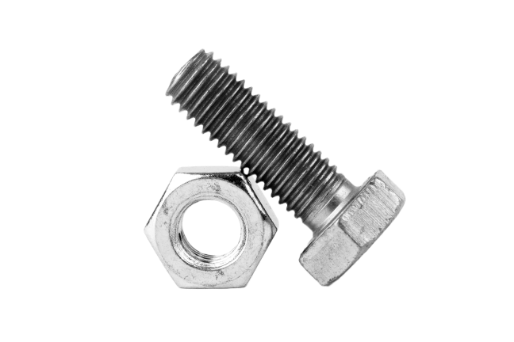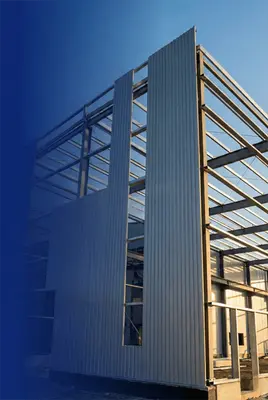
Hybrid materials are engineered for high-stress building conditions where ordinary sealants often fail. They provide flexible adhesion across a range of dissimilar surfaces in both interior and exterior environments. Choosing the right hybrid sealant can simplify installation, reduce failure points, and improve long-term durability.
Core Chemistry and Mechanical Advantages
Moisture-cure chemistry in hybrid sealants supports both bonding and sealing functions across multiple building substrates. These materials adhere to metal panels, flashing, concrete, glass, and aluminum framing systems. Their formulation typically eliminates the need for separate primers, allowing direct-to-substrate application under standard jobsite conditions.
Unlike traditional products that rely on solvent evaporation or multi-stage cures, these sealants cure consistently in ambient humidity. The result is a uniform joint without voids or shrinkage lines. Once cured, the material remains elastic and capable of absorbing movement without cracking or detaching.
How Hybrid Sealants Perform on Concrete, Metal, and Glass
On concrete, metal, and glass, hybrid polymer sealants maintain adhesion during movement and resist joint failure under real-world conditions. Because of their elastic structure, they tolerate differential movement across dissimilar materials without tearing or delaminating.
- In concrete joints, they resist surface cracking and stay adhered around slab edges and precast panel transitions.
- On metal substrates—including steel roof panels, wall cladding, and HVAC assemblies—they accommodate expansion and contraction while holding edge adhesion.
- On glass, they form a stable, flexible bond that prevents edge pull or bead separation under thermal cycling.
Paintability and Aesthetic Integration
One advantage of hybrid caulking is compatibility with water-based paints. Painters can coat cured joints to match surrounding surfaces without blistering or discoloration. The finished seal has a smooth, matte texture that blends well into EIFS, masonry, and coated steel.
This combination of performance and finish quality makes these products popular in both commercial and institutional buildings where appearance matters alongside durability. Contractors can use one material for high-visibility transitions as well as utility seals hidden behind panels or enclosures.
Faster Installation and Cleaner Bead Control with Hybrid Sealants
These sealants simplify installation for crews working across variable conditions. They extrude evenly at both low and moderate temperatures, helping maintain bead control and coverage. This allows field crews to complete transitions with fewer adjustments or misapplications.
Fastener Systems supports installers with sealants that are easy to tool and deliver consistent bead quality. The material’s initial tack level holds its shape well, reducing the risk of joint sag on vertical seams. Applicators also report minimal odor during use and no complex mixing or substrate conditioning steps.
Simplified Jobsite Logistics and Product Flexibility
By using this category across multiple applications, contractors reduce the number of SKUs carried to the jobsite. This standardization makes it easier to train crews and eliminates errors from using the wrong sealant in critical areas. FSI’s hybrid products are available in multiple packaging sizes to support everything from handheld touchups to full façade installs.
Common Jobsite Use Cases by System Type
These sealants are commonly used in curtain walls, parapets, architectural joints, and rooftop transitions. Because they work across multiple substrate types, a single tube can handle transitions between concrete, aluminum, and coated steel in the same assembly.
In horizontal joints, the cured bead holds under foot traffic and mechanical loads. It stays intact without tearing or lift-off. In HVAC enclosures or penetrations, the flexible bond line helps prevent air and water infiltration even under pressure.
Hybrid Sealants in Metal Building System Assembly
In metal building systems, this material supports field assembly of wall panels, ridge caps, eaves, and gable trims. Its movement tolerance ensures long-term performance even in locations subject to wind load, vibration, or seasonal expansion.
Failure Prevention Through Hybrid Chemistry
Hybrid sealers bond cleanly to coated metals and retain shape under thermal stress. They prevent edge leaks that accelerate corrosion and help keep joints watertight during freeze-thaw cycles. In facade systems, they limit panel rattling and restrict moisture entry behind trim or flashing. Each of these factors contributes to fewer callbacks and a longer lifespan for the building envelope.
When applied correctly, these materials maintain performance over the life of the assembly. Sealant breakdown from UV, movement fatigue, or improper adhesion is less likely to occur. Crews and specifiers choose them for assemblies that require long-term flexibility and resistance to weather-related failure.
Hybrid Sealants from Fastener Systems Perform Year-Round
The performance characteristics listed above are reinforced by the specific hybrid formulations distributed by Fastener Systems. These sealants are rated for all-season use and maintain consistent behavior across changing jobsite temperatures. This makes them a dependable choice for exposed conditions like exterior joints, rooftop terminations, and perimeter seals around mechanical penetrations.
Moisture Resilience and Joint Durability in Challenging Conditions
In moisture-prone or humid environments, the cured bead remains intact. This helps block water entry at flashing seams and expansion joints, limiting the risk of mold, corrosion, or substrate degradation. These formulations are also designed to tolerate cyclical movement and incidental joint abrasion in high-use areas.
Hybrid Products Available from Fastener Systems
Tremco Dymonic FC: A hybrid polyurethane sealant designed for dynamic joints exposed to weather, UV, and substrate movement. Fast skin time and paintability make it suitable for both vertical and horizontal applications.
Pecora Dynatrol I-XL Hybrid: A moisture-curing STPU hybrid sealant ideal for expansion joints, curtain walls, and structural transitions. Offers strong adhesion and flexibility across dissimilar materials with low VOC content.
These sealants give contractors dependable results across climates, substrates, and installation conditions—backed by proven supplier support.
Sealant Performance You Can Trust from Fastener Systems
Fastener Systems offers high-performance hybrid sealants built for metal buildings, mechanical enclosures, and facade assemblies. Our hybrid line reduces installation time and minimizes risk during field application. Learn more about sourcing and availability by visiting our sealant distributor network or by contacting us today for more information.

